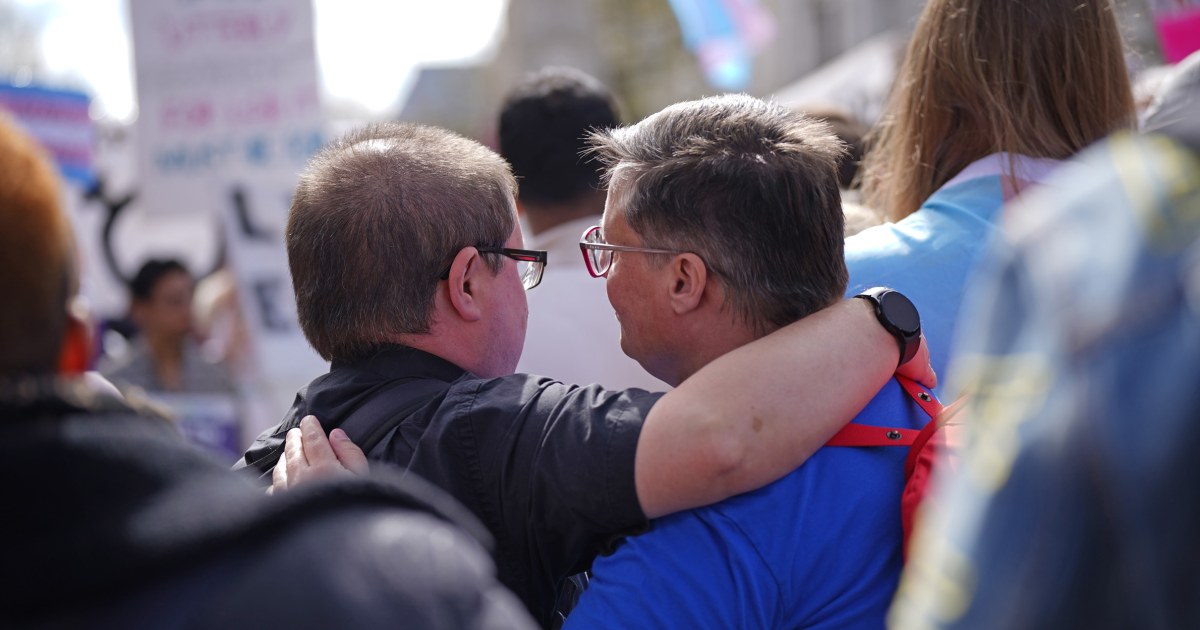
A substantial proportion of LGBTQ people report having been subjected to systematic efforts to deter them from expressing their sexuality or gender identity, according to a major new international review of over a dozen studies. Known as conversion therapy, such treatment has been broadly condemned by psychological and medical organizations and has been banned for minors in 22 states.
Transgender people, the study found, reported a history of conversion therapy at a higher rate than gays and lesbians.
“We’re disheartened to find that these practices remain prevalent,” said Travis Salway, an assistant professor of health sciences at Simon Fraser University in Vancouver, British Columbia.
Salway is the lead author of the study, which is the first international systematic review — considered one of the strongest forms of scientific evidence — to examine how commonly sexual and gender minorities report having experienced conversion therapy.
He and his co-authors published their findings Wednesday in PLOS One. They analyzed 14 survey studies of LGBTQ people, conducted between 2011 and 2020. Six were from the U.S., four from Canada, and one each from Australia, Colombia, South Korea and the United Kingdom.
None of these studies were based on representative samples of LGBTQ people. So the review’s findings aren’t necessarily generalizable to gay and trans populations at large. The proportion of study populations reporting having experienced conversion therapy ranged widely, from 2% to 34%, with a median of 8.5%.
“This is a big problem. It really should be a big problem even if it’s happening to one person,” said Dr. Jack Drescher, a New York psychiatrist and one of the leading advocates in the decadeslong movement to end conversion therapy, referring to the apparent persistence of the practice. He was not involved in the study.
The paper cited a definition of conversion therapy written by one of its co-authors, Florence Ashley, an assistant professor in the faculty of law at the University of Alberta, who called it “any treatment, practice, or sustained effort that aims to change, discourage, or repress a person’s sexual orientation, gender identity, gender expression. . . or any behaviour associated with a gender other than the person’s sex assigned at birth.”
The median proportion reporting a conversion therapy history was higher in the U.S., at 13%, than in Canada, at 7%. Salway’s team wrote that Canadian attitudes toward sexual and gender minorities may be “more affirming” than those in the U.S.
A median of 8% of racial minorities and Indigenous North Americans reported a history of conversion therapy, compared with 5% of whites. The study authors noted the legacy of U.S. and Canadian governments forcibly sending Indigenous children to boarding schools, where European gender and sexuality norms were enforced.
The analysis found that a median of 12% of trans people reported a history of conversion therapy, compared with 4% of gay people. The authors theorized that this disparity was likely due in part to the longer history of health professionals condemning conversion therapy for homosexuality. They also pointed to “slower improvements in affirming attitudes, social policies and legal protection regarding transgender people.”
Whether gay or trans, people assigned male at birth were more likely than those assigned female at birth to report experiencing conversion therapy. The researchers theorized this could be in part because of greater stigma toward effeminacy in boys than masculinity in girls.
Two additional studies included in the review examined surveys of mental health professionals. A British survey conducted two decades ago found that about 1 in 5 psychologists and 1 in 10 psychiatrists reported having treated at least one patient to reduce their same-sex attraction. And a U.S. study of marriage and family therapists, published in 2013, found that 3.5% reported having practiced conversion therapy.
The review paper’s authors stated that they hope it will affect policy, by conveying to lawmakers how commonly LGBTQ people have experienced conversion therapy. However, the investigators were not able to break down their findings according to respondents’ age, and the study provides no insights into how the incidence of these practices has changed over time.
That said, Ilan Meyer, a researcher at UCLA’s Williams Institute and the lead author of one of the reviewed studies, said that his team analyzed 2016 to 2017 survey responses from gay Americans born between 1956 and 1997 and found no significant differences between birth cohorts within that period in the proportion reporting conversion therapy exposure. This suggested persistence in conversion therapy practices, Meyer said.
‘I couldn’t imagine myself as a gay adult’
“I really wanted it to be true,” said Nathan, 29, a Midwestern gay man, of the hope that the conversion therapy he underwent at 16 would end his same-sex attraction. “I couldn’t imagine myself as a gay adult.”
Nathan, who asked to go only by his first name to save his parents from scrutiny for sanctioning his adolescent request to see a conversion therapist, said of the counselor, “Obviously, he has to have figured out at some point that this doesn’t work.”
Once common practice among psychotherapists, counseling to change a patient from gay to straight came to be seen as unethical by mainstream mental health professionals in recent decades.
Research into conversion therapy’s harms to gay individuals began to emerge in the mid-1990s. Investigations into the practice’s impact on trans people have been undertaken much more recently.
The American Psychological Association first issued a resolution opposing conversion therapy for homosexuality in 1997, concluding in 2009 that such practices are “unlikely to be successful and involve some risk of harm.” The APA expanded such opposition to include gender identity in 2021.
The PLOS One paper stated that the practice is associated with “severe psychological distress, depression, substance abuse, and attempted suicide.”
An analysis of a 2015 survey of trans adults, published in 2019, found that those who reported a history of conversion therapy were more likely to have experienced recent severe psychological distress and a history of suicide attempts.
Conversion therapy “has hurt a lot of people,” said Erica Anderson, a clinical psychologist and a past president of the trans health care group USPATH. “We don’t have any studies saying that it helped people long-term.”
All this said, because the authors of the review paper analyzed survey studies that by definition examined the recollections of sexual and gender minorities, they wrote that a limitation of their analysis was that it could not capture the experiences of any people who experienced conversion therapy and ultimately did identify as cisgender (meaning not trans) and heterosexual.
The investigators excluded studies intended to survey people actively seeking conversion therapy, theorizing that if they had, the median prevalence rates seen in their analysis likely would have been even higher. Two papers excluded from the analysis for this reason had prevalence estimates of 15% and 20%.
According to the Williams Institute, which estimated in a 2019 report that 698,000 American LGBTQ adults had experienced conversion therapy, the form practiced today is most commonly talk therapy. Historically, practitioners have used aversion therapy, including inducing nausea and vomiting or providing electric shocks. The practice has often been grounded in religious beliefs.
California became the first state to ban conversion therapy for minors in 2012. Since then, 21 additional states plus Washington, D.C., have enacted similar bans, which apply to both gender identity and sexual orientation. These laws generally exempt religious or spiritual advisers.
The new review paper’s authors noted that the studies they analyzed did not define conversion therapy uniformly and that this may have been one of the factors driving the wide range in the prevalence rates seen in their findings. They wrote that future studies “would benefit from improved and consistently used definitions” of the term. They also advocated for researchers to investigate religious ideologies’ contributions to the persistence of the practice.
Source: | This article originally belongs to Nbcnews.com









